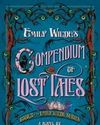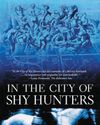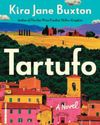
Secrets, surprises, and twists are powerful narrative tools. They can conjure questions and mystery in readers' minds that raise suspense, stakes, and reader investment, and knowing how to use them effectively can create some of the most memorable moments in your story.
Stories with a shocking reveal often get widely read and talked about. They keep readers hooked throughout, not knowing what comes next, eagerly turning pages to find out.
But pulling off a successful reveal is a tricky tightrope act between giving readers enough information to feel invested and keeping back enough to keep them hooked. It's the striptease of literature: show too much and you lose all the excitement and buildup. Too little and nobody cares.
Balancing these considerations often relies on three key elements: knowing what and how much to keep as a reveal, when to reveal it, and how to unspool the hidden information for maximum suspense and impact.
WHAT AND HOW MUCH TO REVEAL
Reveals aren't a device every story needs and one reason they may fall flat is when they don't feel necessary or intrinsic to the main story.
Effective reveals are the ones that essentially clarify, illuminate, or define a character arc or story: Amir's actions in the past with his childhood best friend, Hassan, are a central facet of his arc and the story in both present and past storylines in Khaled Hosseini's The Kite Runner; what happened to Stella Vignes after abandoning her twin sister in the 1950s to live as a white woman in Brit Bennett's The Vanishing Half reverberates among all the other characters for generations.
هذه القصة مأخوذة من طبعة September - October 2023 من Writer’s Digest.
ابدأ النسخة التجريبية المجانية من Magzter GOLD لمدة 7 أيام للوصول إلى آلاف القصص المتميزة المنسقة وأكثر من 9,000 مجلة وصحيفة.
بالفعل مشترك ? تسجيل الدخول
هذه القصة مأخوذة من طبعة September - October 2023 من Writer’s Digest.
ابدأ النسخة التجريبية المجانية من Magzter GOLD لمدة 7 أيام للوصول إلى آلاف القصص المتميزة المنسقة وأكثر من 9,000 مجلة وصحيفة.
بالفعل مشترك? تسجيل الدخول

Avoiding the Dreaded Info Dump
Pouring too many details into a few pages is both the sign of an immature writer and an unfocused story.

FINDING LIGHT IN THE DARKNESS
How comic Gary Gulman effectively blends humor into his story of overcoming major depression.

Stephen Graham Jones
They say you should never meet your heroes. But speaking with Stephen Graham Jones is a lot like speaking with your local theater nerd about the history of Broadway, except with a lot more goosebumps and nightmares.

Failure Is the Foundation
I can recall exactly where I was when I came up with the idea for my adult fantasy series, Emily Wilde.

Fiction Is the Lie That Tells the Truth Truer
On the Legacy of Tom Spanbauer

What Is Your Story Question?
Revision and editing advice to take your first draft to the next level.

Writing for the People We Hope to Become
Elisa Stone Leahy's new middle-grade novel, Mallory in Full Color, tackles the in-between moments of adolescence, when who we are and who we want to become collide.

Creating Community
Whether hot off the presses or on the shelves for years, a good book is worth talking about.

Pat Barker
The Booker Prize-winning author of Regeneration shares the role characters play in developing novel ideas and explains what appeals to her about reimagining mythology.

How to Write in Different Genres
Emiko Jean and Yulin Kuang share tips and strategies for how they successfully write in different genres and mediums.